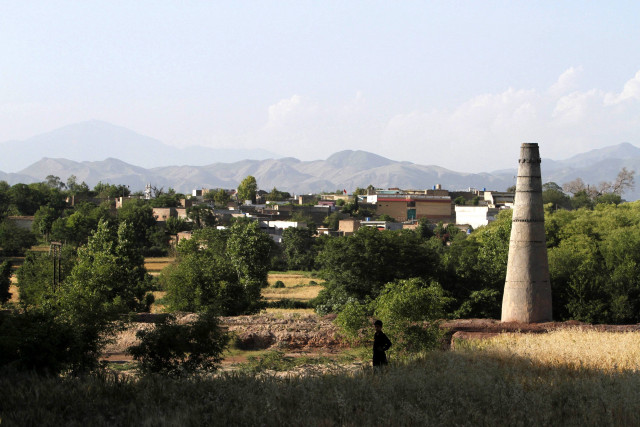Impeding disaster: In Haripur, uncompensated farmers fear further losses
No monetary compensation given to over 300 flood-affected farmers.

A year on since the torrential rains wreaked havoc in Haripur district, over 300 local farmers still await compensation for their losses and fear that the current monsoon will further damage their crops and farms.
Like other parts of Hazara division, intermittent heavy rains lashed the entire Haripur district last July and August, damaging infrastructure, standing crops, orchards, and farmland. Over 90 per cent of union councils in the district were affected.
According to the District Disaster Management Authority and the agriculture department, the agriculture loss suffered by the farming community was estimated to be Rs17.346 million, in which different crops and orchards spread over 524.51 acres were destroyed.
Standing crops of maize, barley, sugarcane, jawar on an area of 392.32 acres, vegetables including bitter guard (karela), tomato, spinach, cauliflower, green chillies, and others on an area of 76.13 acres, orchards of guava, loquat and others spread over 54.25 acres were destroyed. Flower nurseries over an estimated area of 1.81 acres were also washed away by flash floods.
“I have not yet received a single rupee from the government for my loss,” said Akram of Changi Bandi village. He said he lost his standing crop of bitter guard during a flash flood.
Another local farmer, Rashid Khan, said, “Had I been a resident of some district across the Attock bridge under the Awami National Party leadership, I would have easily secured my rights.” He blamed the local public representatives for failing to protect the rights of their electorates.
The farmer said he was sceptical about the measures the government is taking take to protect them from “impending disaster” during the ongoing monsoon. He suggested that the farmers should be offered interest-free loans for at least five years so they could rehabilitate their livelihood and resources on their own.
Agriculture Executive District Officer Sadiq Hussain Shah told The Express Tribune that his department had thrice sent the loss assessment report to Director General Agriculture Peshawar, but since Haripur was among the less affected districts in the 2010 floods, no monetary compensation was given to the affected farmers. However, he was hopeful that the government will offer some agricultural incentives to the farmers this year. He said the government is also planning to develop an awareness campaign to teach farmers about coping with floods.
Haripur has a total irrigated area of 77,836 acres and 18.2% of its one million people in the rural areas are economically dependent on agriculture and related economic activities.
According to official figures, 29 people, including women and children, died in last year’s flash floods, 21 sustained injuries and eight are still missing. At least 76 cattle and 3,250 chickens were killed in 43 out of 45 Union Councils (UCs) of the district. In 14 of the most affected UCs over 4,000 people were displaced.
At least 1,019 houses were badly damaged, while 1,606 were partially damaged by the heavy rains. A total of 51 government schools, 10 health centres, three poultry farms, 27 roads, five bridges, seven pathways, 33 water-supply schemes, nine electricity transformers, five canals, six flood protection walls and 10 water mills were also destroyed.
Published in The Express Tribune, July 17th, 2011.


















COMMENTS
Comments are moderated and generally will be posted if they are on-topic and not abusive.
For more information, please see our Comments FAQ